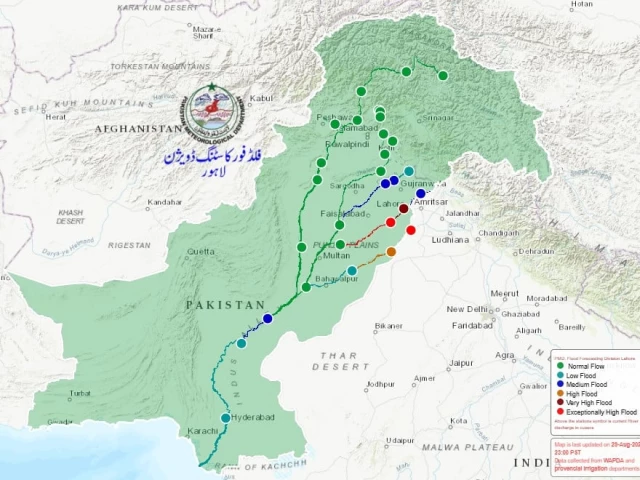The story of South Asia’s great rivers is one of geography, history and shared fate. China, Pakistan and India may be divided by boundaries and politics, but they are inextricably linked to a common water system – the Indus basin. Although dozens of rivers cross the region, they eventually belong to three larger systems, with Indus reigning top. Indus, derived from Near Lake Manasarovar in Tibet, cuts a dramatic track through the Himalayas flowing into Indian illegally occupied Jammu and Kashmir (IIOJK) before entering Gilgit-Baltistan (GB). From Skardu and Bisham it moves into Khyber-Pakhtunkhwa (KP), where the mighty Tarbela dam utilizes its waters. Downstream gathers Indus strength from the Kabul River before pushing south through Kalabagh, Chashma and Taunsa, on the way to Mithankot. It is here in Mithankot that Indus embraces the water in his five major side elves: Sutlej, Beas, Ravi, Jhelum and Chenab. Together they form Panjnad, who after a short race of 71 kilometers fuses into Indus and creates one of the world’s most powerful river systems. From there, the river flows past Guddu, Sukkur and the Kotri bearings before completing its 3,180-kilometer journey into the Arabian Sea. The meaning of these rivers goes beyond geography. They define Punjab, literally "Land with five rivers."
Beas, Sutlej, Ravi, Jhelum and Chenab not only shape the landscape, but also support centuries of civilization, culture and agriculture. Nevertheless, their courses also emphasize the complexity of regional policy. Sutlej and Ravi both rise in Indian Punjab, cross into Pakistan and eventually join Chenab. Beas never enters Pakistan independently; Instead, it merges with Sutlej in India, which then flows across the border. Sutlej, along with Beas, passes through Harike, Ganda Singh Wala, Sulaimanki and Head Islam and eventually reaches Panjnad. Ravi enters Pakistan at Jassar via Madshopur, flows past Shahdara, Baloki and Sidhna and blends together in Chenab near Ahmedspur sial. Jhelum flows through Azad Kashmir via Kohala, Mangla Dam and Rasul before coming to Chenab at Trimmu in Jhang. Chenab itself enters Pakistan through Head Marala via Akhnoor and flows past Khanki and Qadirabad to meet Jhelum, Ravi and Sutlej at Panjnad. Chenab is one of the largest traveling almost 960 kilometers before uniting with his sister rivers. All of these rivers form a complicated network that is the basis of the Indus Waters Treaty in 1960. For Pakistan, Indus is nothing less than a lifeline. It irrigates fields, forces dams and feeds the delta before surrendering to the sea. For India and China, these waters are also important arteries of survival and growth. In a region that is often divided by politics, the rivers of the Indus basin remind us that nature only emphasizes man-made boundaries. They tie nations together, silently but powerful, as they have done for millennia.



